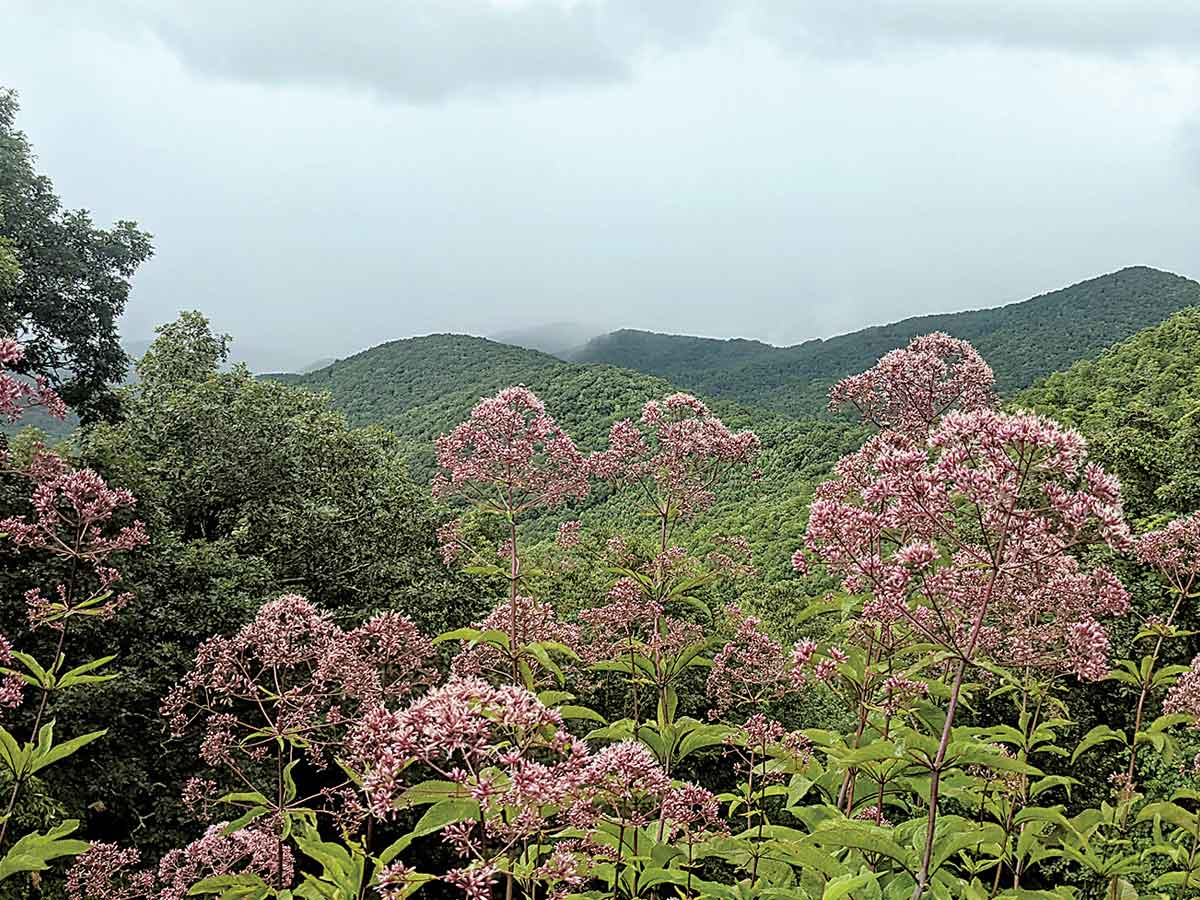Notes from a plant nerd: Joe Pye Weed, The Queen of the Meadow
 Purple Joe Pye weed blooms tower above other plants in the meadow. Adam Bigelow photo
Purple Joe Pye weed blooms tower above other plants in the meadow. Adam Bigelow photo
The stories of plants are what led me in to falling in love with wildflowers, just as much as their pure beauty and color. And it is through story that we learn about and relate to the world around us. It is how lessons about life, both general and specific, are passed down through the generations. Stories evolve into myth, legend and lore, embedding themselves in the culture of a people.
Among my favorite stories about plants is about the incredibly beautiful Joe Pye weed, also called the queen-of-the-meadow (Eutrochium spp). The second common name, queen-of-the-meadow, is a reference to how tall and regal this wildflower is in the meadows and roadside ditches where it can be found. Like any queen, she sits above her subject, taller and higher than almost any other plant growing around her. I like queen-of-the-meadow as a common name, and it is the one that I use most often when I see one of the different species of Eutrochium that share that name.
The name most often used for this plant is Joe Pye weed, and there are many different stories and variations about how this plant became known as Joe Pye. The first story that I heard was about a “snake-oil salesman” who travelled around the countryside duping people out of their money by selling them fake cures and potions. Images of a carney barker, combined with a con artist, riding around in a wagon that can be turned into a stage and store for the hawking of his tonics and tinctures. Of course, this negative view of home remedies and plant-based cures was certainly perpetuated by the newly emerging pharmaceutical industry, who’d rather you didn’t know how to cure and heal yourself naturally.
For in another version of this story, Joe Pye was an herbalist who made medicines from plants, and his most popular and most effective medicine was a general tonic made from the roots of Eutrochium. These medicines were either used to treat typhoid, or in other stories the medicine was used to break up kidney stones, allowing them to pass more easily. This medicinal use led to another common name for species of Eutrochium, gravel root. Seemingly, drinking a decoction would cause the big stones to be turned into little gravel pieces.
And of course, the more we look into tales like these, the deeper it gets. For it turns out that there is a version of the “how Joe Pye weed got its name” story that is told from an indigenous perspective. Many herbal doctors and their remedies were learned from indigenous people, who had lived, and learned, and healed each other on this land for long before European settlers were ever here. According to Keewaydinoquay Pakawakuk Peschel, (1919?–1999) an Anishinaabe herbalist, ethnobotanist, storyteller and recorder of Indigenous North American lore, there was an Abenaki healer named Zhopai who primarily used Eutrochium species of plants to treat fevers and other ailments.
I’ve even heard it said that an indigenous word for these plants was Jopi. No matter the tales of its origin, the Joe Pye weed blooms that come at the end of summer are magnificent. These members of the aster family have gigantic flower heads, some of which can be larger than my torso, and bloom in varying shades of pink and purple. Their leaves occur along the stem in a whorl, which means that three or more leaves come out of the stem at the same location.
Related Items
They are a welcome sight rising above the goldenrods (Solidago spp.), ironweeds (Vernonia spp.), asters (Symphyotricum spp.) and grasses that make up a late summer wildflower meadow, looking like a queen on her dais, observing and ruling her subjects below. She seems a benevolent regent. Especially to the bees and butterflies dependent on her gracious nectar. Long may she reign.
(Adam Bigelow lives in Cullowhee and leads weekly wildflower walks and ecotours through Bigelow’s Botanical Excursions. This email address is being protected from spambots. You need JavaScript enabled to view it.)









